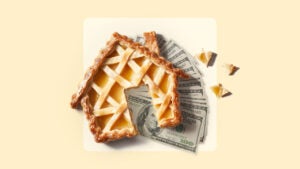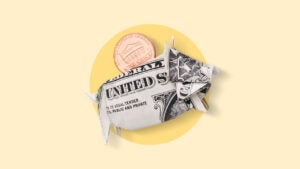5 high-yield alternatives to Series I bonds

Series I bonds have been a darling of regular investors over the past year or so, but their popularity may have already peaked for investors seeking attractive yields. The big appeal of Series I bonds is that they have built-in inflation protection, meaning that as inflation rises, the bond increases its annualized interest rate – a figure that hit an eye-popping 9.62 percent in 2022!
But with inflation cooling somewhat, the interest rate on Series I bonds fell to 6.89 percent in late 2022 and then to 4.3 percent for bonds issued between May 1 and October 31, 2023. And if the Federal Reserve succeeds in squashing inflation, rates on I bonds will likely fall even further in 2023 and into 2024. So what alternatives do investors have to generate sizable income?
Here are some high-yield alternatives to Series I bonds and why they might fit your portfolio.
5 alternatives to Series I bonds
The investments below offer attractive yields, but in most cases they don’t offer the guaranteed backing of the federal government, as Series I bonds do. So while you may be getting a higher yield than these bonds, it does come with higher risk, too.
1. CDs
CDs are now offering some of the highest rates in more than a decade, so investors looking for the safety of a decent FDIC-insured yield can find it. And now may be an excellent time to lock in one of the market’s best CD rates, as the Fed looks like it may soon stop hiking rates.
Depending on your financial situation, a couple different options may be best:
- A high short-term yield, which gives you the best yield over the next 6 to 18 months, at the risk of interest rates falling at the end of the term.
- A somewhat lower-yielding but longer-term CD, which gives you a good but somewhat lower yield over the full term, helping mitigate the risk of rates falling in the next year.
Either way, you can score a better yield than with Series I bonds.
Thinking of going long-term? Here’s why the time may be right for long-term CDs.
2. Bonds
As inflation and interest rates rose, the price of bonds got dinged, especially the price of long-dated bonds. But with investors expecting the pace of the Fed’s rate hikes to slow, stop or even reverse course, bonds may be poised to come back to life. And if you think the Fed’s aggressive rate hikes will ultimately lead to a recession, bonds could be a great place to be.
Short-term fixed-rate bonds – even Treasury securities – offer attractive rates, and they won’t feel much impact whether prevailing interest rates go up or down. Longer-dated bonds will move more in response to changes in interest rates, so if you think short-term rates will move up further, then longer-term bonds may not be the place to be yet.
Of course, if you think interest rates will move still higher, floating-rate bonds could make sense, too. These bonds adjust their payout based on prevailing interest rates, so if rates rise, the bond would pay out more. Rates could fall, too, though these bonds usually have a minimum payout.
If you’re not interested in picking individual bonds but still want bonds in your portfolio, then one of the top bond ETFs may be the way to go.
3. Dividend stocks
Dividend stocks can offer you a payout and the potential for appreciation over time, making them a more attractive long-term investment than Series I bonds. However, they come with more volatility and without a government guarantee that you’ll get your principal back. But the best dividend stocks offer strong growth in their payouts, meaning your income grows over time.
If you’re not interested in doing the research required to invest in individual stocks, it can make a lot of sense to buy a dividend ETF or dividend mutual fund. You’ll get a diversified portfolio of dividend stocks, and the best dividend funds won’t charge you a huge expense ratio, either.
4. REITs
REITs, or real estate investment trusts, are another great option for those looking for income. REITs own and manage real estate, and pay no corporate income tax in exchange for passing along most of their taxable income as dividends to shareholders. It’s not all just dividend here, either: REITs have a strong long-term track record that sees total returns ranging from 9-12 percent over time.
Individual investors have a variety of ways to invest in REITs, but probably the best is buying publicly traded REITs because of their superior governance and public financial disclosures.
5. Closed-end funds
Closed-end funds are a bit of an oddball in the investing world, but they’re known for their high (and not always sustainable) dividends. Like other funds, they own stocks or bonds, but they usually use borrowed money to help juice the dividends to investors. That leverage can be great in the good times when asset prices are rising, but rough when prices are falling.
Still, closed-end funds pay high dividends, and quite often they trade at a significant discount – often 8-10 percent – to their net asset value, which is typically a good time to buy them.
Selectively purchasing closed-end funds can deliver solid returns and attractive dividends, but you’ll need to do some work to find the best ones. Plus, they can be even more volatile than regular investment funds, mostly due to the use of borrowed money to boost those dividends.
Watch out for the market’s highest yields
When you’re on the hunt for dividend income, it can be easy to fixate on the market’s highest dividend yields and buy in regardless of the investment case. These individuals are what the investment world calls “yield pigs,” because high yields often lead to them being slaughtered.
When the market offers up a high yield, it’s often signaling that the fundamental business is not in great shape. So investors looking for the market’s highest yields need to carefully examine the investment’s other merits and not buy blindly because of the high yield. If a yield gets cut, it often sends the asset price lower, more than offsetting any potential gain from the income.
Bottom line
With inflation seemingly on the downturn, the yield on Series I bonds is likely to fall over the near term. So, investors looking for an attractive payout should begin examining alternatives, even if they’re not quite ready to forgo the safety and still-attractive yield on these government-backed bonds.
Editorial Disclaimer: All investors are advised to conduct their own independent research into investment strategies before making an investment decision. In addition, investors are advised that past investment product performance is no guarantee of future price appreciation.
Why we ask for feedback Your feedback helps us improve our content and services. It takes less than a minute to complete.
Your responses are anonymous and will only be used for improving our website.






